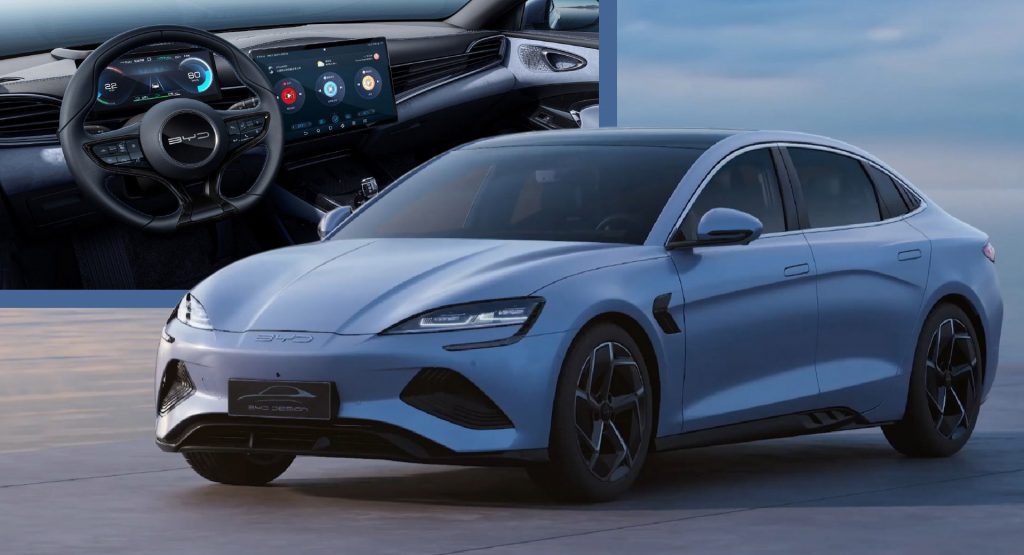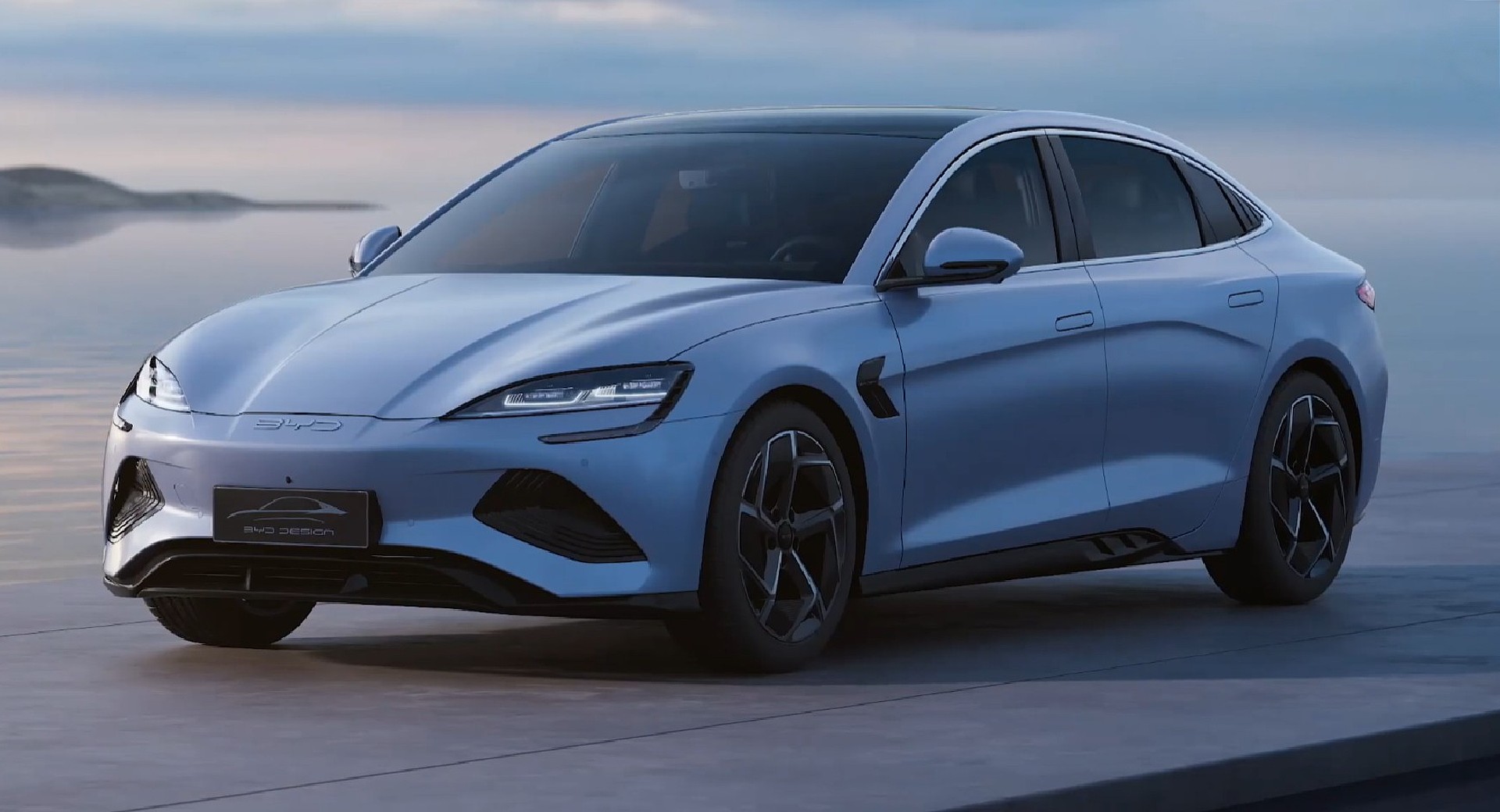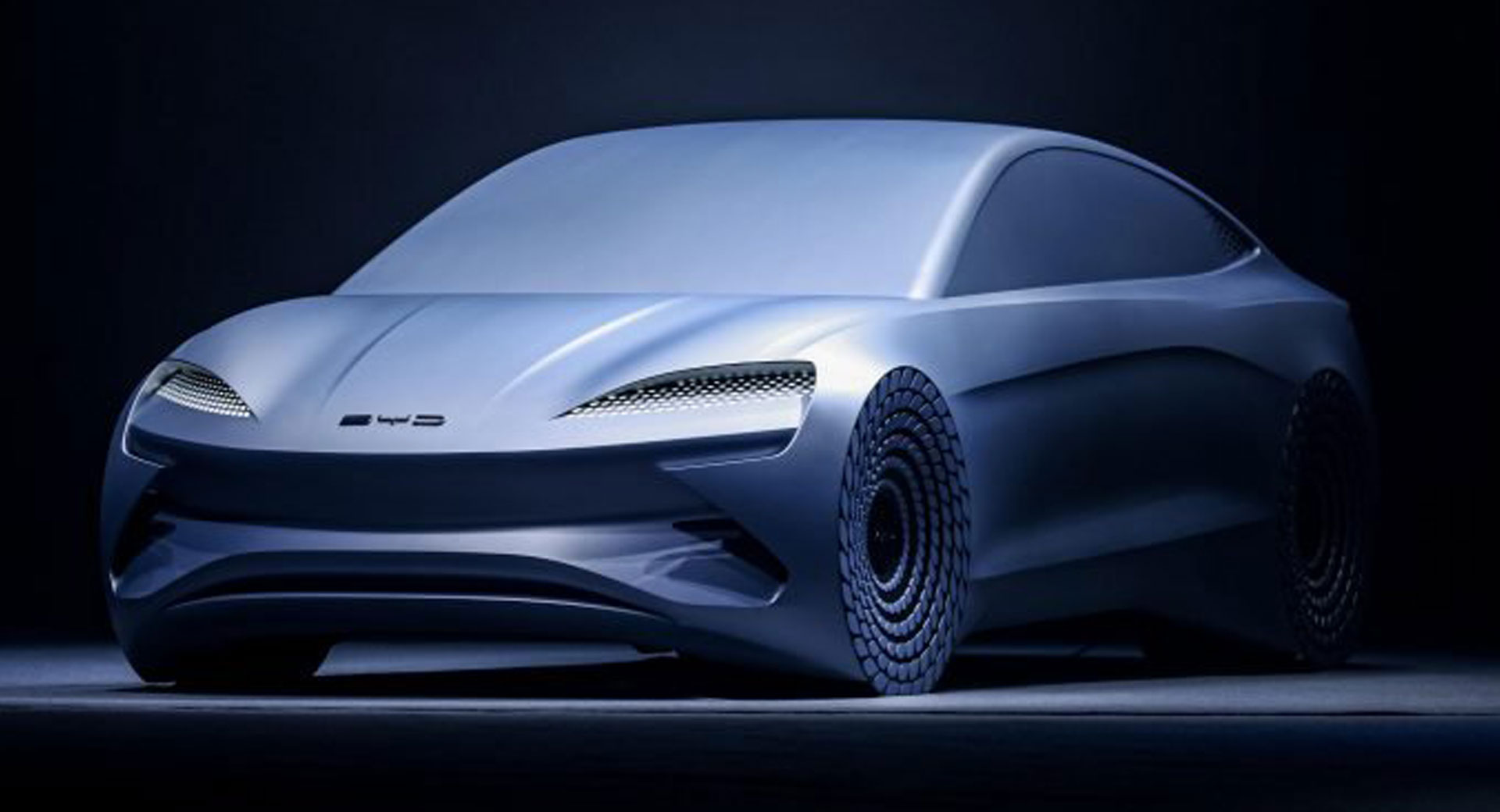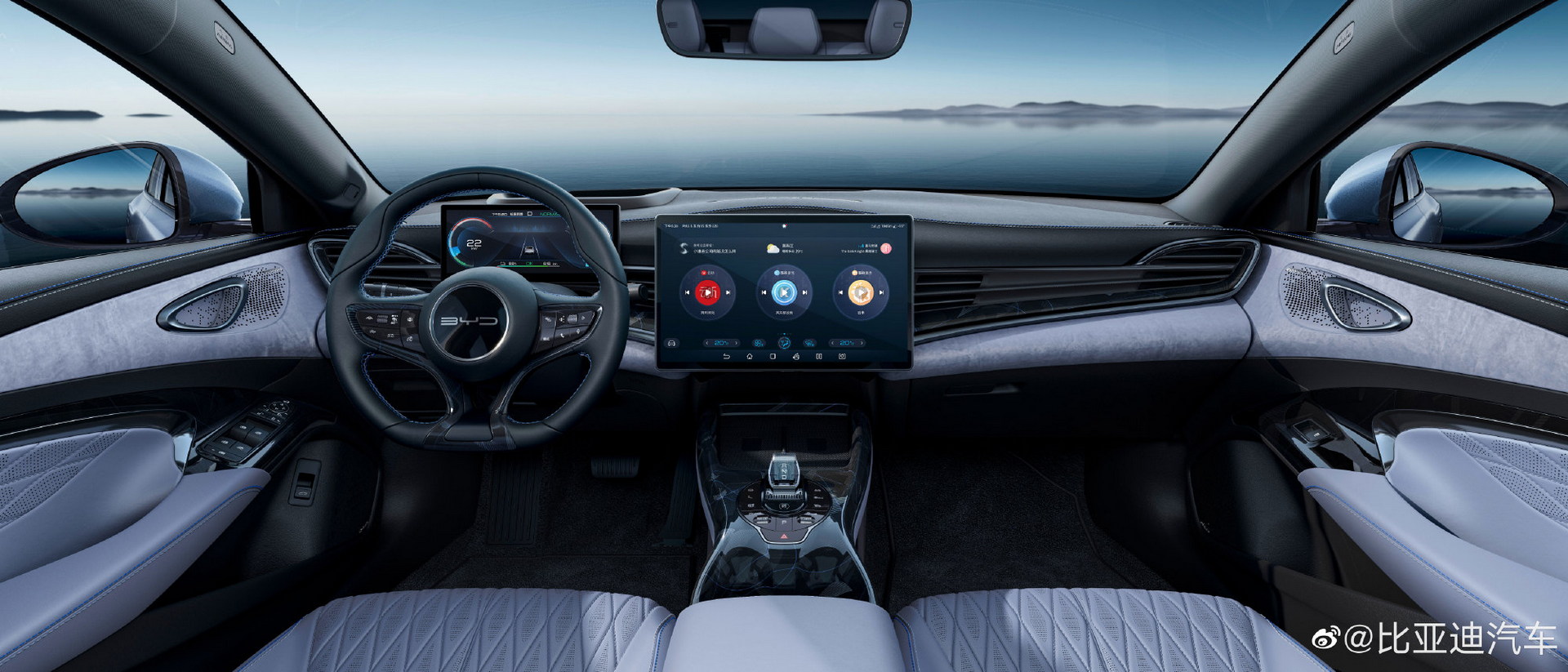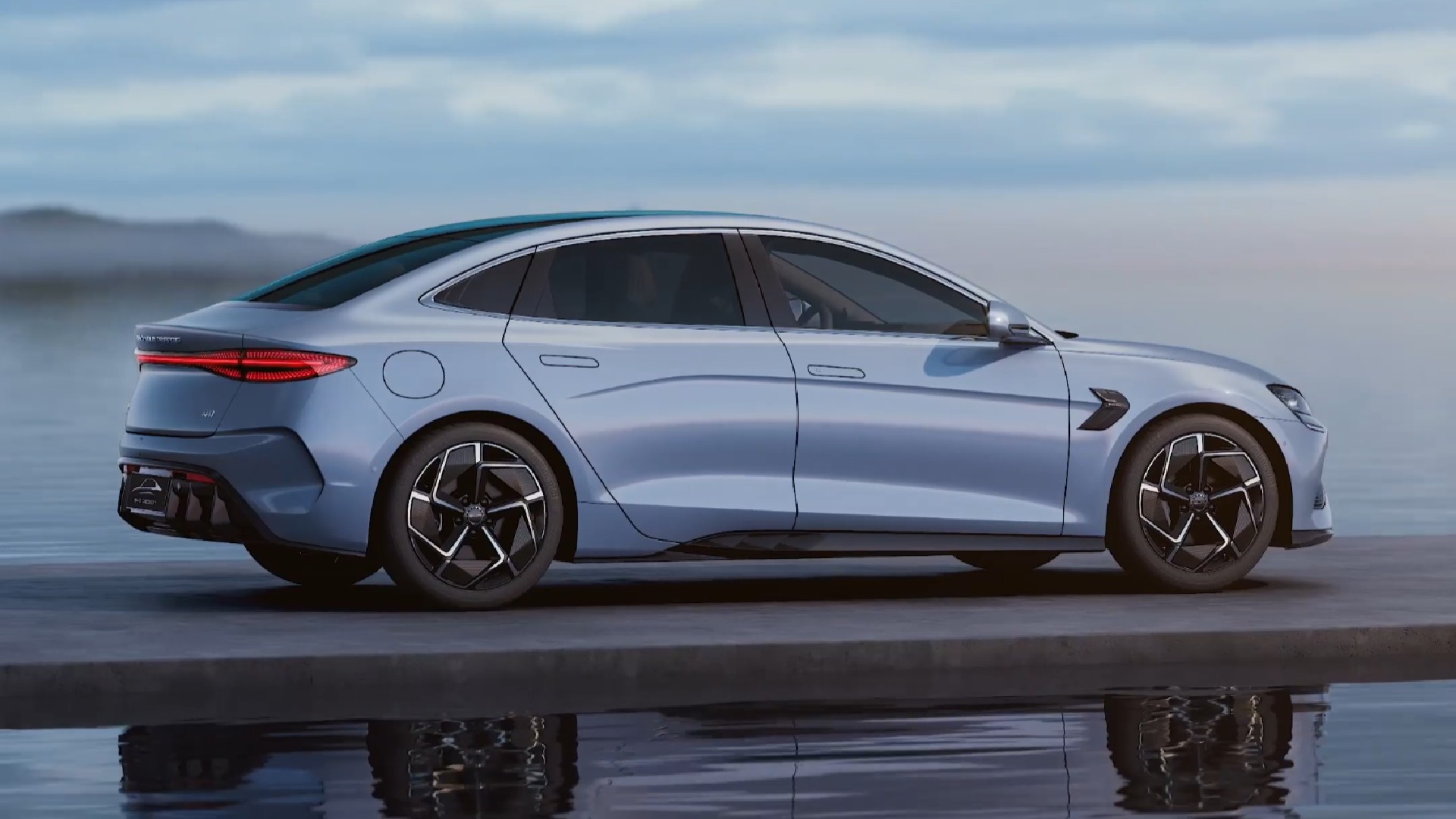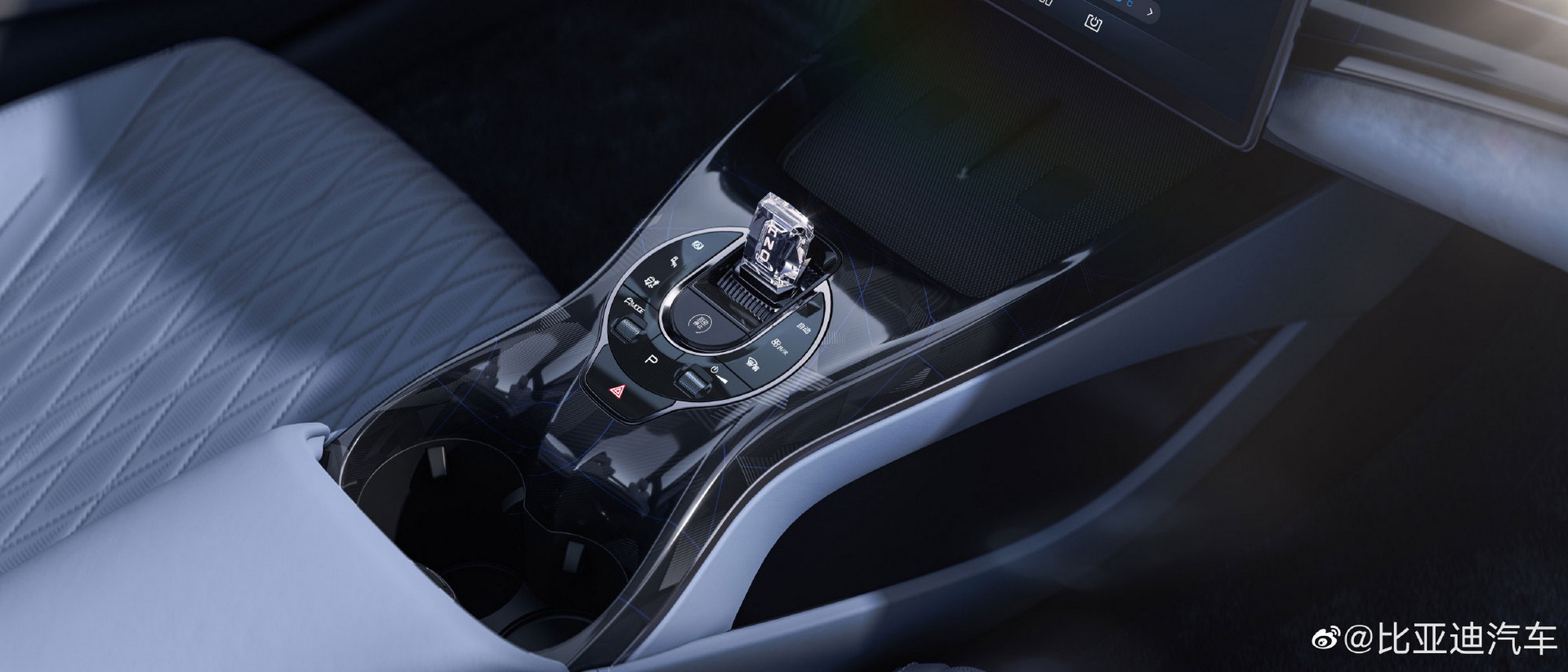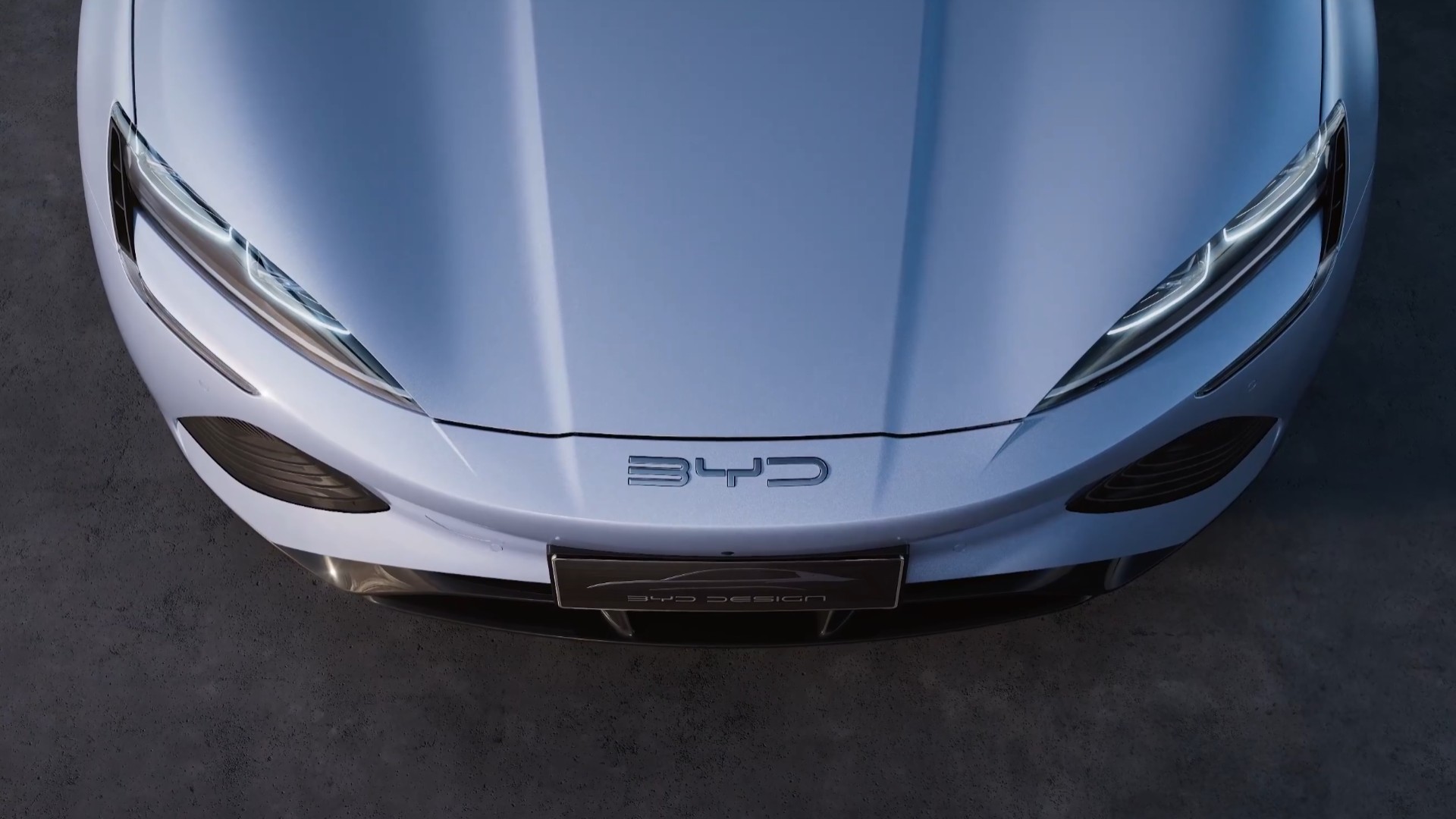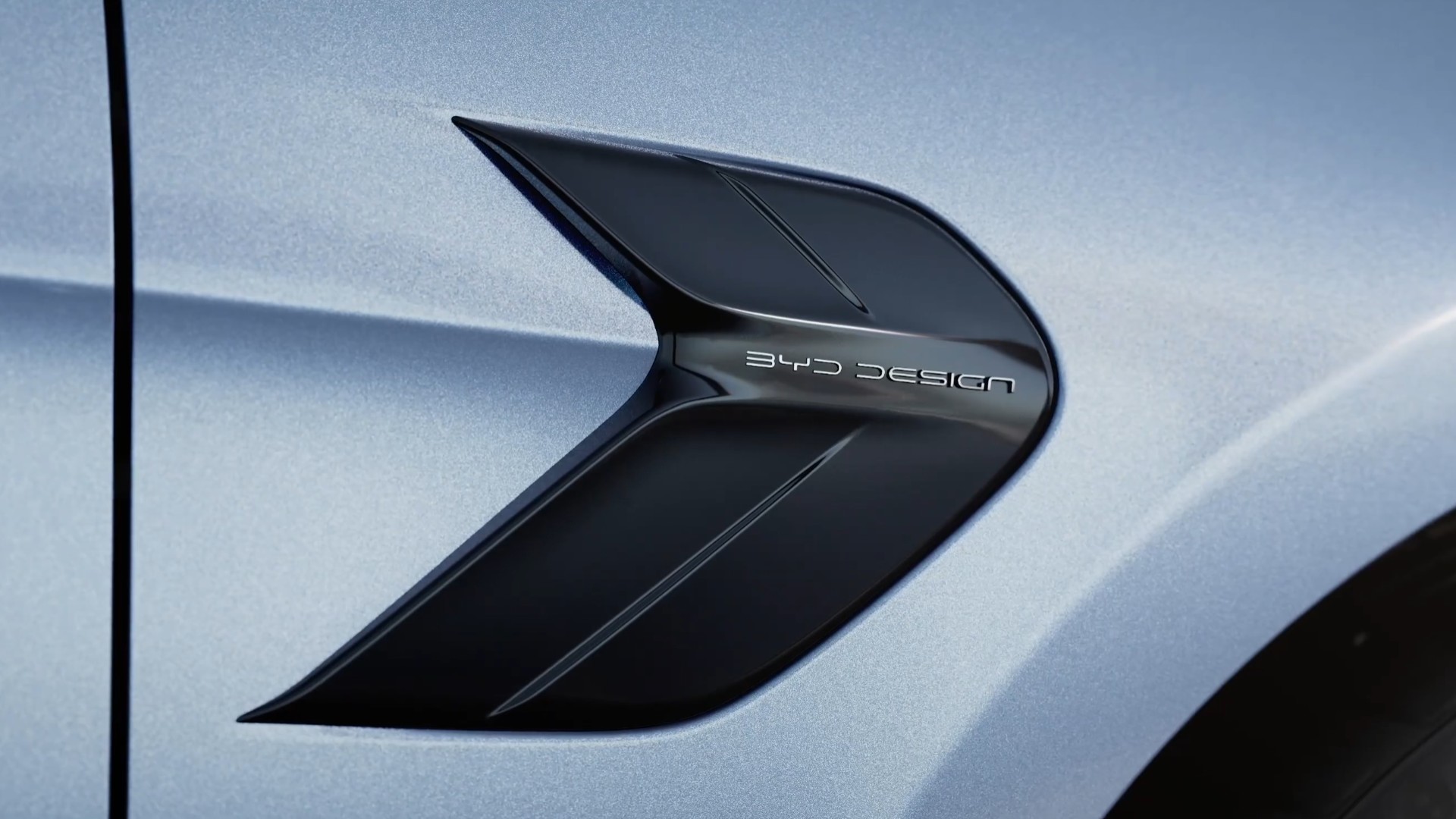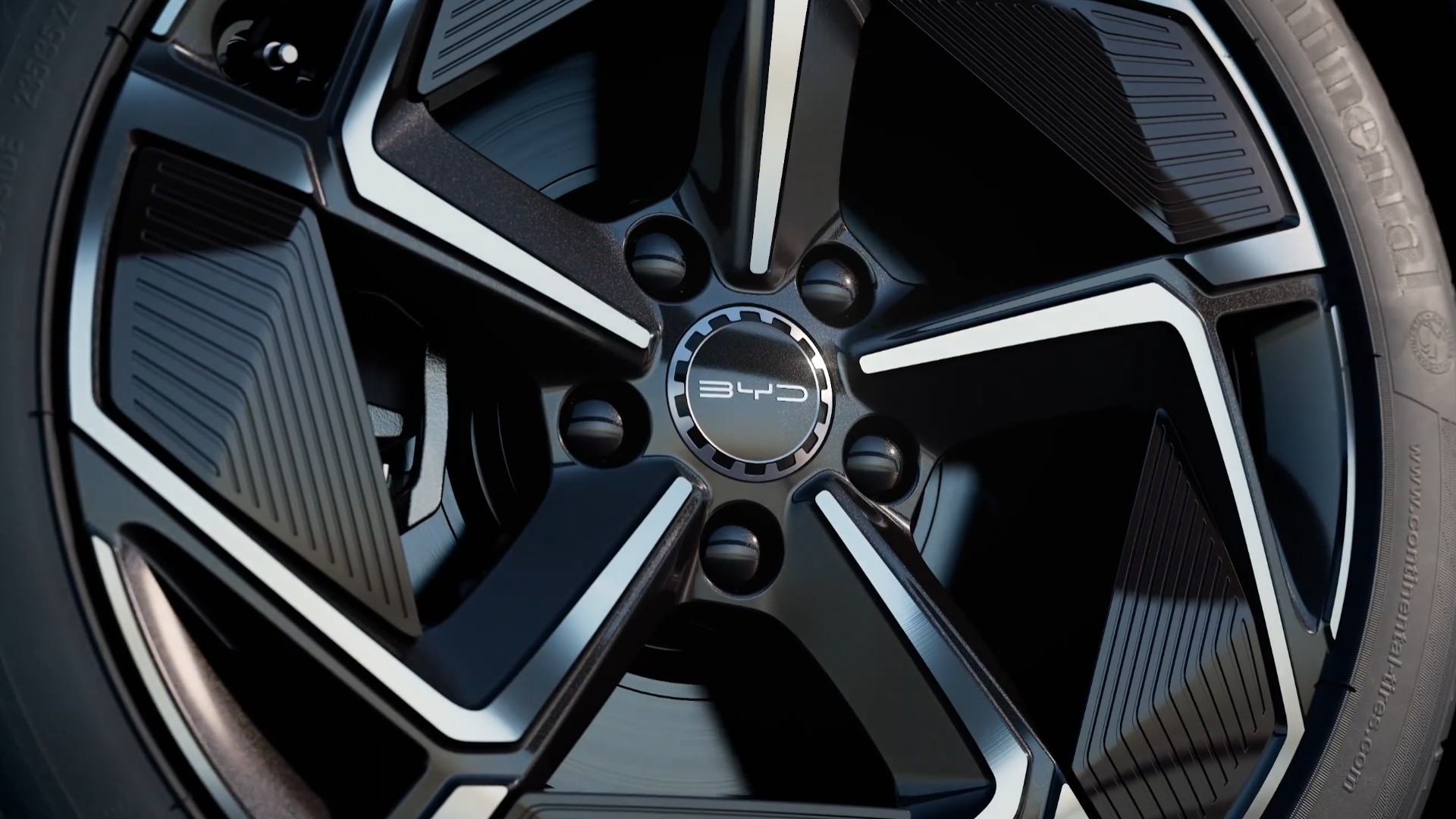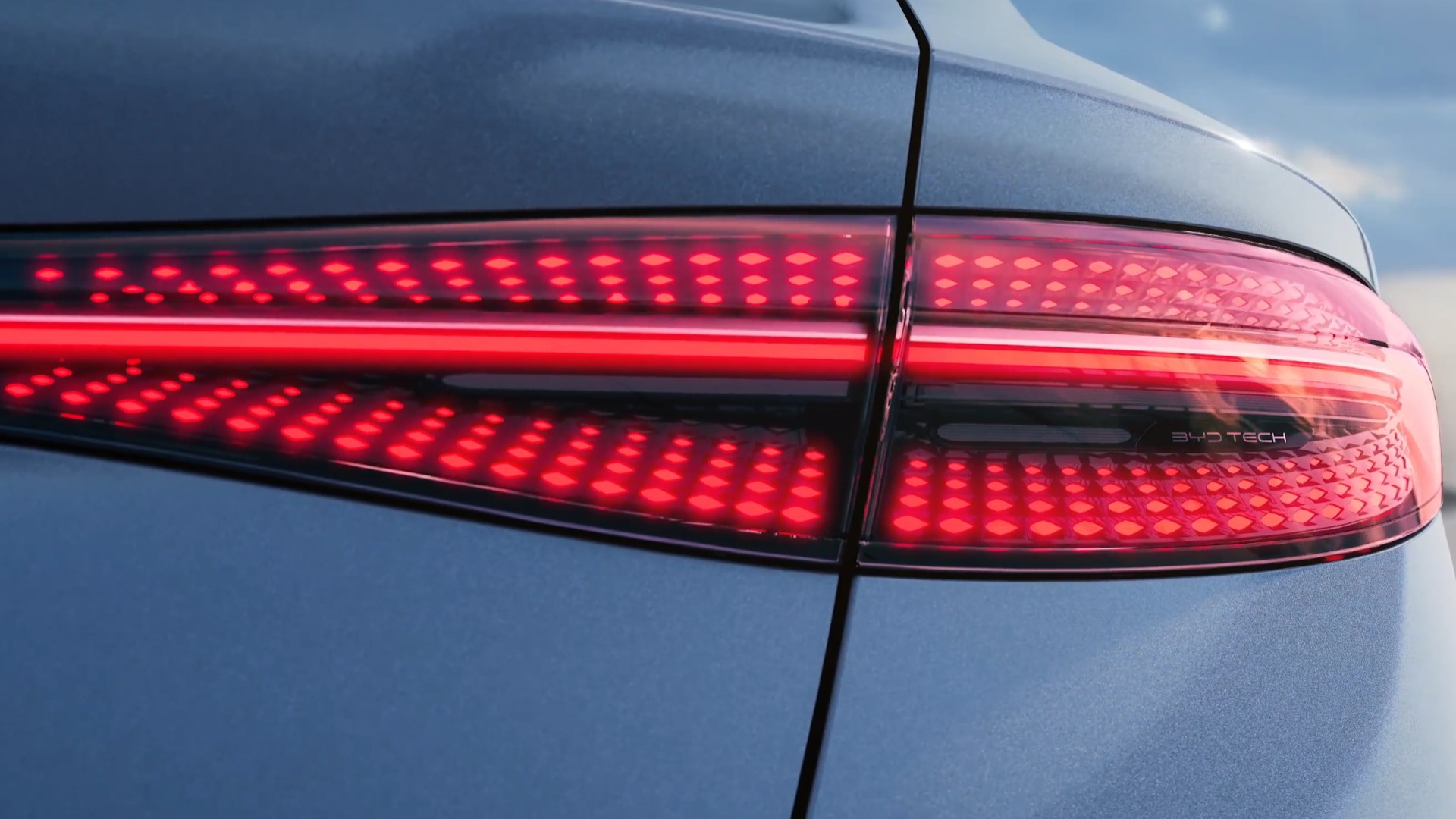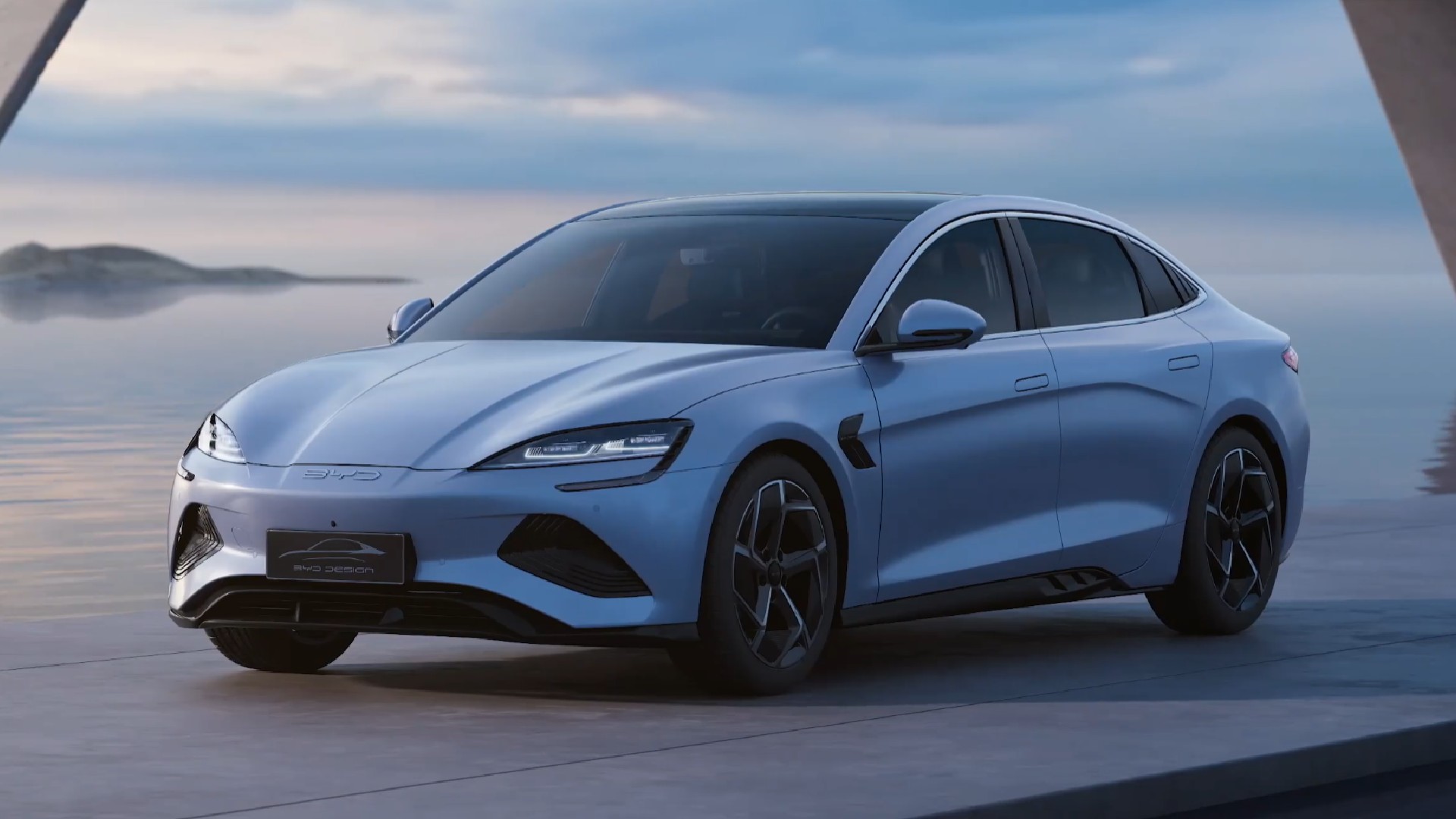UPDATE: We’ve added the newly released interior photos of the BYD Seal along with additional information about the electric car’s specifications
BYD revealed the exterior and interior design of the Seal sedan, with its debut initially scheduled for the postponed Beijing Auto Show. The fully electric four-door model is a follow-up to last year’s Ocean-X concept and will be based on BYD’s new electric architecture called the e-platform 3.0.
The Seal continues the ocean-themed nomenclature in BYD’s range, where marine life names are reserved for EVs like the Dolphin and warship names for PHEVs like the Destroyer.
See Also: BMW i3 eDrive35L Is A Fully Electric Long-Wheelbase 3-Series For China
The Seal is an evolution of the futuristic concept with similar dynamic lines and slightly toned-down features including the LED lighting units and the conventional wheels. Overall the model is a testament to the significant improvement in the design standards of Chinese automakers.
According to leaked documents the BYD Seal measures 4,800 mm (189 inches) long, 1,875 mm (73.8 inches) wide, and 1,460 mm (57.5 inches) tall, with a wheelbase of 2,920 mm (115 inches). Those dimensions make it slightly larger than the Tesla Model 3 and more in line with the Nio ET5 and the BMW i3 eDrive35L. A similar footprint is expected from the upcoming Toyota bZ SDN which will allegedly use BYD’s technology.
Read Also: Toyota To Launch A China-Only Affordable EV Sedan In 2022 Using BYD’s Technology
BYD has also published a number of interior shots revealing a massive free-standing infotainment touchscreen taking the role of a center-console. The screen could be the 15.6-inch unit we recently saw on the BYD Destroyer, as well as the 8.8-inch digital instrument cluster. However, the rest of the Seal’s cabin is all-new, marking a departure from previous BYDs.
The designers chose organic shapes for the interconnected climate vents on the dashboard. A similar treatment can be seen on the centre tunnel featuring a diamond-like gear selector and a few buttons organized in a circle around it. The underwater theme is enhanced by the light blue upholstery with leather texture on the seats, and suede appearance on the dashboard and upper portion of the doors.
The specs of the car that is underpinned by BYD’s e-platform 3.0 were also leaked as part of local homologation. The EV comes with a single rear-mounted electric motor producing 150 kW or 230 kW (201 or 308 hp), while the flagship features a dual-motor setup. This combines a 160 kW (214 hp) motor at the front and a 230 kW (308 hp) motor at the rear allowing a 0-100 km/h (0-62 mph) acceleration in 3.8 seconds.
Depending on the configuration, BYD’s Blade 800V battery allows a range of 550 km (342 miles), 650 km (404 miles), or 700 km (435 miles). Similarly, the weight of the EV is ranging from 1,885 kg (4,156 lbs) to 2,150 kg (4,740 lbs).
Local media suggest the BYD Seal will cost between ¥220,000-280,000 ($34,500-44,000), making it a lot cheaper than the Tesla Model 3 which starts from ¥339,900 ($53,400) in China. Mind you, BYD’s new EV won’t be reserved for the Chinese market. BYD has confirmed it will be offered in Australia from 2023 under the Atto 4 name, while other markets could follow.




